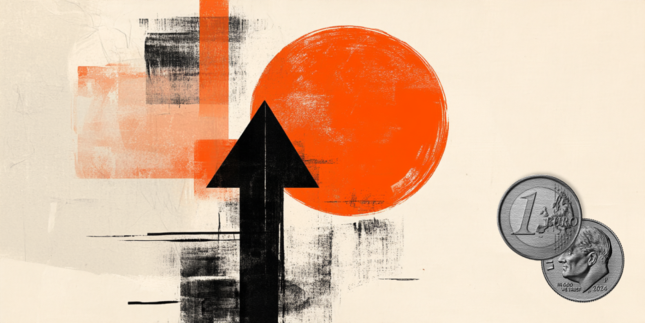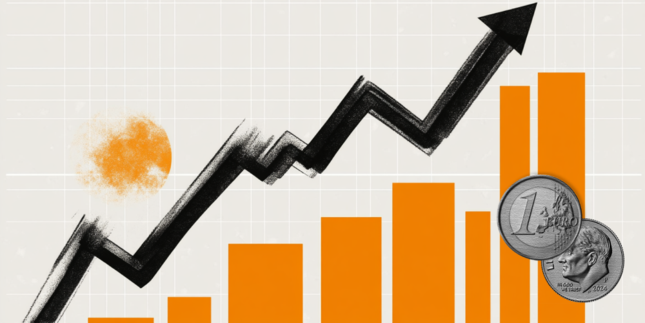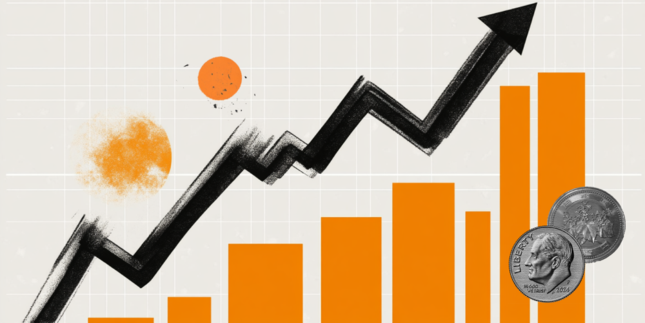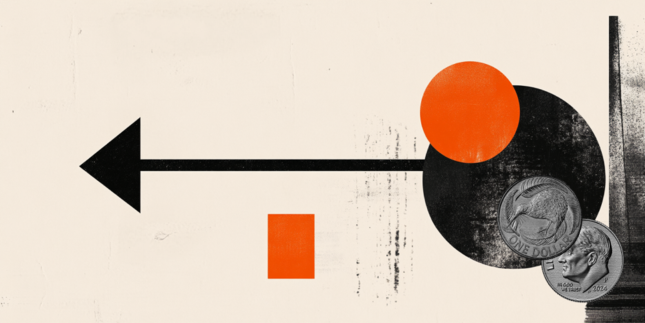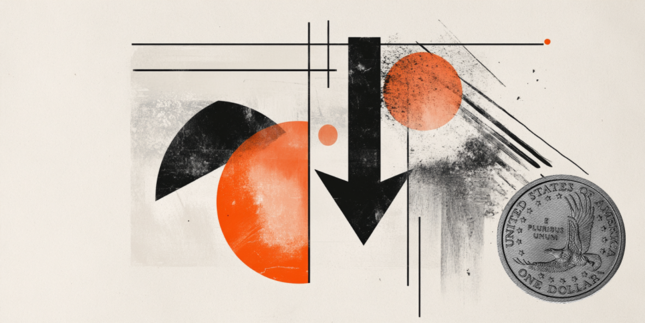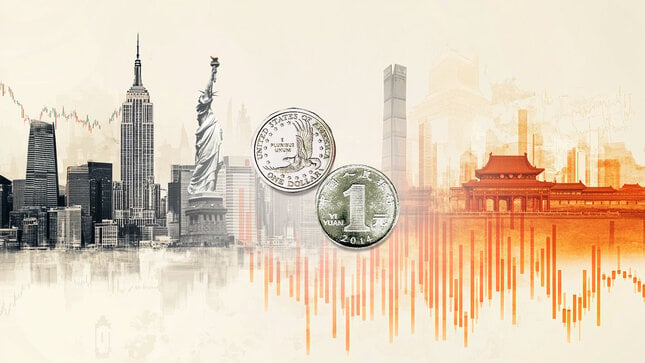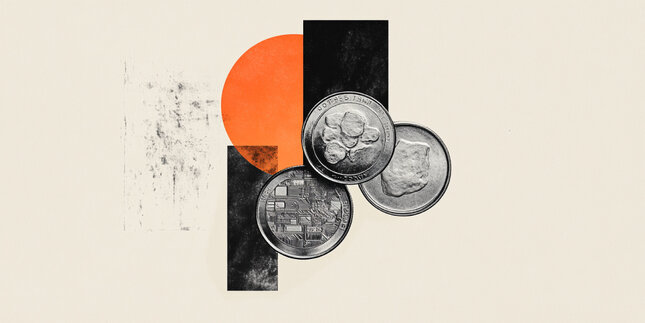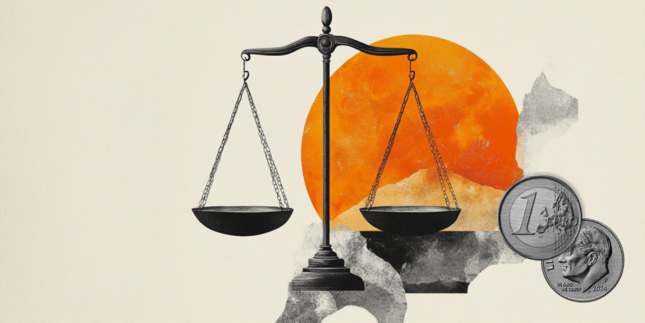Gold price falls flat ahead of Tuesday's US data release
- Gold price edged up for a second day ahead of Trump’s tariff deadline.
- Traders mull the impact of "liberation day" where Trump will implement reciprocal tariffs on all countries.
- Gold traders are looking for upside levels with $3,200 as the next nearby target.
Gold price (XAU/USD) sees earlier gains fade and is holding on to a small intraday gain ahead of the US trading session on Tuesday, trading near $3,132. The precious metal trades slightly above $3,130 at the time of writing and the new all-time high was eked out at $3,149 this Tuesday. Investors are still seeking refuge in Gold’s market with United States (US) President Donald Trump set to announce reciprocal tariffs on Wednesday around 19:00 GMT.
Meanwhile, traders brace for a heavy trading week in terms of US economic data. In the runup towards the Nonfarm Payrolls release due on Friday, markets will wait for several data to be published. Overnight, during a CNBC interview, Richmond Federal Reserve (Fed) Bank President Thomas Barkin said the economic reading is wrapped in a thick fog and is unclear for policymakers to read where rates should go, while recession fears are still on the table, CNBC reports.
Daily digest market movers: African mining companies up 33%
- The surging Gold price has propelled South African mining Stocks to their best monthly performance on record, shielding the country’s benchmark index from the mayhem in global markets, Reuters reports. The South African mining Equities had their best monthly performance on record in March, with a 33% jump, driven by increasing Gold prices.
- The CME FedWatch tool sees chances for a rate cut in May decrease to 13.1% compared to near 18.1% on Monday. A rate cut in June is still the most plausible outcome, with only a 23.1% chance for rates to remain at current levels.
- Physical demand and a favorable macro backdrop are helping drive the Gold rally, according to Amy Gower, a commodity strategist at Morgan Stanley, which predicts prices may rise to $3,300 or $3,400 this year. That outlook coincides with forecasts from other major banks, with Goldman Sachs Group Inc. now looking for $3,300 by year-end, Bloomberg reports.
Gold Price Technical Analysis: This could be it for now
A small ‘parental advisory’ on the longevity of the Gold rally makes sense around now. With the main tailwind for the Goldrush set to be officially announced, the ‘buy the rumour, sell the fact’ rule of thumb should be considered. The risk could be that once the reciprocal tariffs take effect on Wednesday, only easing due to profit-taking in Gold could occur once separate trade agreements and partial unwinds take place.
On the upside, the daily R1 resistance at $3,142 has already been tested in Tuesday’s steep rally. The R2 resistance at $3,160 could still be targeted later in the US trading session as the European session sees Gold price action settle a touch. Further up, the broader upside target stands at $3,200.
On the downside, the daily Pivot Point at $3,109 should be strong enough to support any selling pressure. Further down, the S1 support at $3,091 is quite far, though it could still be tested without completely erasing the prior’s day move. Finally, the S2 support at $3,058 should ensure that Gold does not fall back below $3,000.
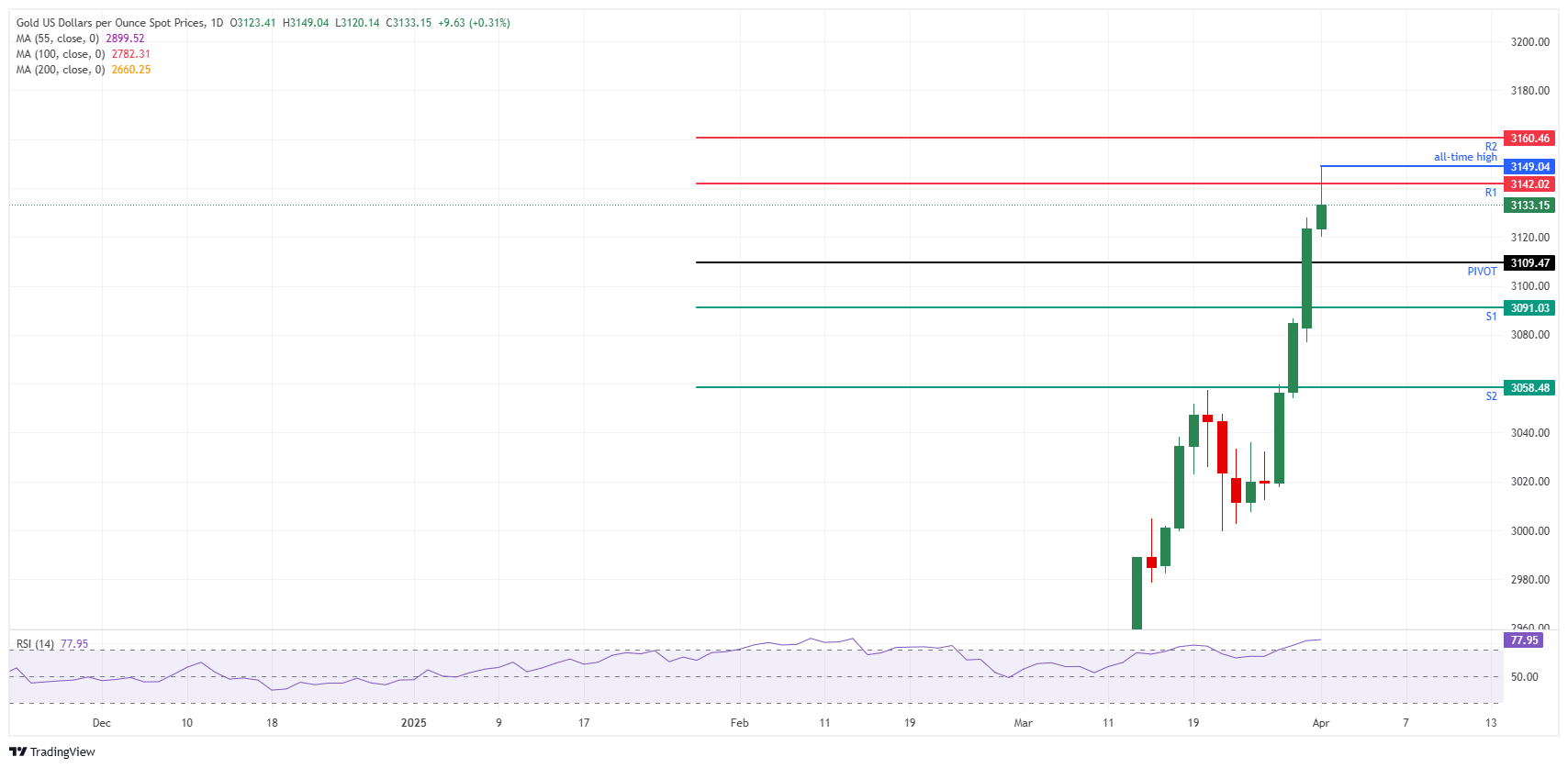
XAU/USD: Daily Chart
Interest rates FAQs
Interest rates are charged by financial institutions on loans to borrowers and are paid as interest to savers and depositors. They are influenced by base lending rates, which are set by central banks in response to changes in the economy. Central banks normally have a mandate to ensure price stability, which in most cases means targeting a core inflation rate of around 2%. If inflation falls below target the central bank may cut base lending rates, with a view to stimulating lending and boosting the economy. If inflation rises substantially above 2% it normally results in the central bank raising base lending rates in an attempt to lower inflation.
Higher interest rates generally help strengthen a country’s currency as they make it a more attractive place for global investors to park their money.
Higher interest rates overall weigh on the price of Gold because they increase the opportunity cost of holding Gold instead of investing in an interest-bearing asset or placing cash in the bank. If interest rates are high that usually pushes up the price of the US Dollar (USD), and since Gold is priced in Dollars, this has the effect of lowering the price of Gold.
The Fed funds rate is the overnight rate at which US banks lend to each other. It is the oft-quoted headline rate set by the Federal Reserve at its FOMC meetings. It is set as a range, for example 4.75%-5.00%, though the upper limit (in that case 5.00%) is the quoted figure. Market expectations for future Fed funds rate are tracked by the CME FedWatch tool, which shapes how many financial markets behave in anticipation of future Federal Reserve monetary policy decisions.
Forex News
Keep up with the financial markets, know what's happening and what is affecting the markets with our latest market updates. Analyze market movers, trends and build your trading strategies accordingly.

